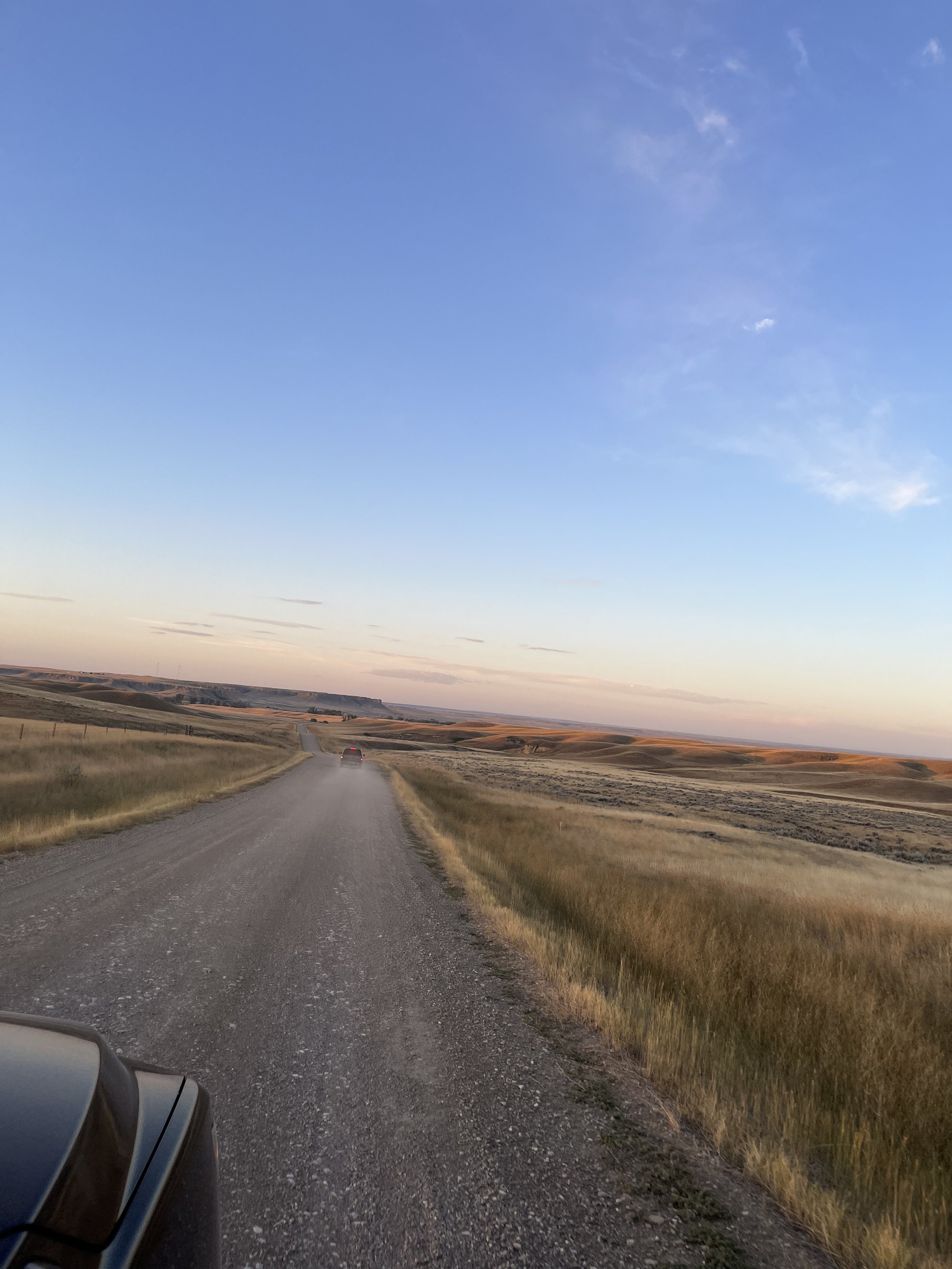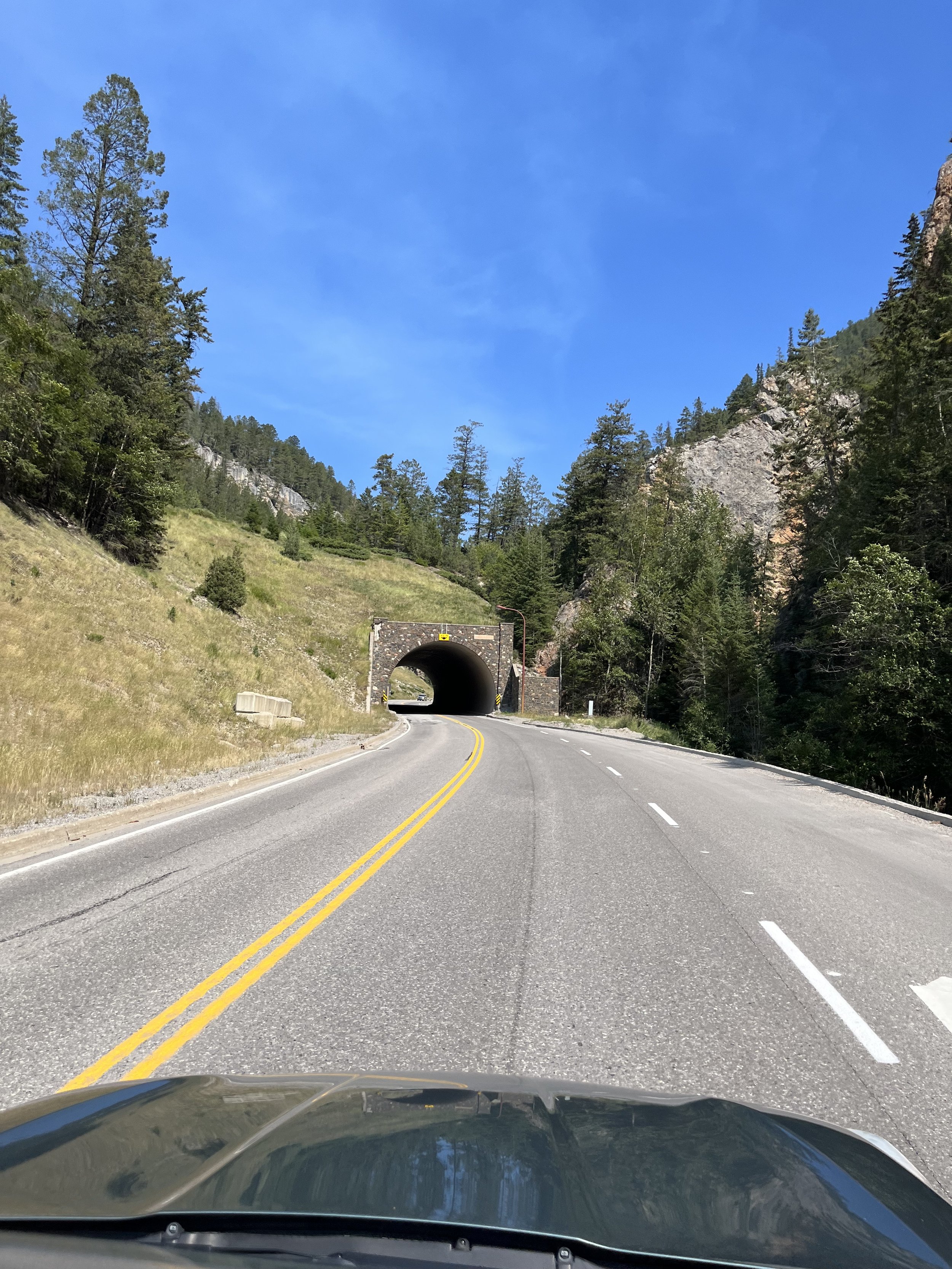
We Have Always Traveled on the Roads
Justin Juelfs, an Area Maintenance Chief for the MDT, leads the maintenance program for Northwestern Montana. For context, his area contains 1,700 lane miles and runs on Highway 93 from Polson to the Canadian Border, and from the Montana/Idaho Border up to Marias Pass and East Glacier. Within his district of management, he has 13 smaller districts called maintenance sections. Each maintenance section has approximately 250 lane miles.
In preparation for the winter months, MDT takes various actions to ensure they can maintain the roads come the first snowfall. “You know when Costco starts putting up their Christmas stuff? That’s about the same time that MDT starts gearing up for winter,” says Juelfs.
Juelfs mentions staffing as a key component in preparing for winter. MDT holds 60 full-time positions for road maintenance, but come winter, they hire 30–35 seasonal staff members to compensate for the increase in maintenance. The staff of MDT have a complex list of requirements to fulfill before they are considered as applicants: A year of big truck driving, a Commercial Driver’s License, and a class A air brake endorsement. Additionally, applicants must take a practical and a behavioral test. Juelfs himself started as a seasonal MDT employee.
The second key component for the preparation of road maintenance is equipment. MDT has 55 snowplows operational for the winter. The snowplows are equipped with both plows and dispensers for fine gravel. This process is what Juelfs calls dressing the trucks.
Salt is somewhat of a controversial topic in road maintenance. Salt can corrode the materials it contacts, and MDT considers the impact to roads including steel-based infrastructure, where salt corrosion sees the most impact. Juelfs says, “A lot of the infrastructure out on the highway’s bridges would be the largest, most expensive asset. A lot of those are made out of steel, or at least, there’s a lot of steel in them along the concrete. So anytime there is a potential to accelerate corrosion, that’s a concern on infrastructure; it’s also a concern on vehicles.”
Highways are separated into four categories based on how many travelers they see each day. Level one roads see over 5,000 travelers a day, a level two sees 3,000–5,000 a day, a level three sees 1,000–3,000 a day, and a level four sees less than 1,000 travelers a day. However, the amount of work needed between categories can be different depending on the weather. Juelfs and his team coordinate how they distribute maintenance based on which roads have the worst conditions.
Covering all 1,700 miles all of the time is the challenge MDT and Juelfs face regularly. Juelfs understands that there is no one-size-fits-all approach to road maintenance, and it’s his duty to ensure the resources of MDT are used in the most beneficial way to the majority of people. In some instances, some folks don’t get access to safe and drivable roads.
Relationships prove paramount in MDT’s efforts to make the roads drivable for public and commercial use. The National Weather Service proves a great partner in maintaining the roads. Juelfs says, “We’ve really started developing good relationships with our external partners like the National Weather Service, they’re a great partner, and we huddle with them early enough and not just in the winter. They also help us out in fire and flood season.”
Customer service is at the root of MDT’s mission of road maintenance. MDT views highway travelers as daily customers of their service, which continues to drive MDT to best serve the communities they work with and for.
Juelfs embraces the opportunity to talk with community members who question MDT’s efficacy. “What comes in the door as a complaint can really be disguised, you know, as an opportunity. It’s a matter of just not taking that personal common ground; and just so you know, we’re not going to be able to please everybody all of the time, but I do believe that we can always try.”
Juelfs and the folks at MDT continue to provide daily customers with the maintenance needed to use the roads that are essential to connecting communities across Montana. Juelfs stressed the importance of community outreach; he wants the people who use the roads to know they can trust the roads they drive on and the folks at MDT to keep them usable. Customer service lies at the heart of MDT and they will continue to serve their communities the best they can.
We Have Always Traveled on the Roads
Story by Ethan VandenBosch
Photos by Ethan VandenBosch
In most places in Montana, cars are a necessary form of transportation. In many ways, cars reflect our liberties as citizens; as such, roads—and the need for them—transform into a necessity for the citizenry alike. The Montana Department of Transportation (MDT) agrees.

